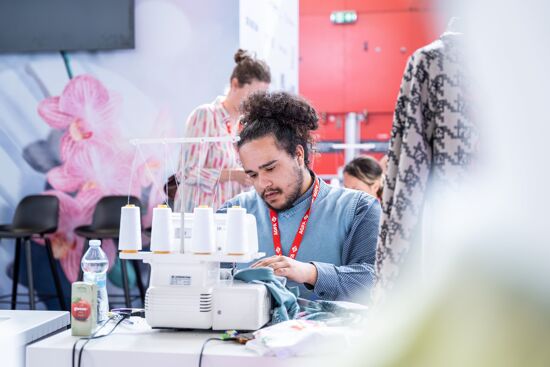Employee engagement strategy: key questions to answer
Employee engagement is not about attitudes towards work, commitment or satisfaction. The key thing to understand is that employees need something tangible to be engaged with.
So what should you engage people with and how should you go about it? Well, the answer to this question is an employee engagement strategy.
Below we’ve come up with three intermediate questions that will help you start thinking about an engagement strategy for your organisation.
Q1: What is currently important to the organisation to get sufficient buy-in for an engagement programme?
This question is about organisational priorities and finding an area the organisation thinks is important enough to be the driving force behind an engagement initiative.
Imagine you’re a manufacturing firm: your products might be of lower quality than a competitor, causing you to lose market share. There’s an organisational imperative to improve product quality.
Part of this could be buying better raw materials. But you won’t create better products just by improving the raw materials. The key thing to understand is that employees need something tangible to be engaged with.
There’s the human side: how can staff contribute to creating the very best products on the market? This sounds like a great opportunity for an engagement strategy because the goal is clear and backed by the organisation.
Q2: How can you make it clear to employees a) why it’s important and b) what action they need to take?
If you’re trying to drum up enthusiasm for taking action (which is what engagement essentially is), people must get why the organisation is focusing on this particular area. There has to be a need, not just a want.
You need to share pertinent information, so in the example of the manufacturing organisation, it must be clear what the consequences of poor products on the market will be. Not just a loss in sales but all the human elements, such as unsatisfied customers or potential redundancies.
You also need to understand your audience so you can engage them in the right way. In our manufacturing company above, for example, design staff may look aghast when you point out how a design flaw is costing the business money, but this may not resonate with the customer service team.
Finally, you must make it clear what everyone can do to move the dial, because once you’ve engaged them with the problem, you then need to identify and highlight the levers they can pull to impact results.
Q3: How can you measure whether the initiative has been a success?
If an initiative is serious enough to get senior leader attention, there must be a way to measure it to show that progress has been made. If you can prove the success of an engagement programme, you’re more likely to get the budget in future.
There are two crucial steps here: first is establishing the success criteria from the outset.
In the manufacturing example above, core metrics could be to sell more products, reduce the number of complaints and increase market share.
In each team you’ll have more specific goals, such as improving design features or providing better customer service to improve the overall product.
And don’t forget: it’s much better to underpromise and overdeliver when discussing what will be achieved.
Ultimately, coming up with an engagement strategy isn’t rocket science but you need to be clear what the organisation is trying to achieve, how each person contributes and how you can get their buy-in, and what success looks like for the project.
FESPA's Profit for Purpose philosophy
What further could you be doing to support your own business growth? Should more support be given to high growth companies? FESPA invests heavily in supporting business through education, subsidised events, training programmes and curated conferences, both standalone and at exhibitions.
The next occasion will be the FESPA Global Summit 2017, taking place from 22-23 February 2017 5 at the Grand Elysée Hotel in Hamburg, Germany.
The event aims to inspire print providers and other participants in the print value chain to build stronger, more innovative businesses, providing delegates with valuable insight through exclusive presentations and case studies from industry experts.
If you are interested in getting ready to capitalise on the opportunities that industry change affords and being aware of the hottest areas for growth, join fellow business owners and directors at this exclusive apex event.
For more information on the the Global Summit 2017 and to register please visit www.fespaglobalsummit.com. visit: Don't forget to use code: GLSH701 when registering.
Watch FESPA TV's coverage from the FESPA Global Summit 2015.
Topics
Interested in joining our community?
Enquire today about joining your local FESPA Association or FESPA Direct
Recent news

Are analytics services worthwhile for wide format printing?
Nessan Cleary shares how press manufacturers are increasingly offering machine analytics services and shares if these are good value for money in the wide format sector.

Smart factories and customisation technology explored at Personalise Make Wear 2024
FESPA's Textile Ambassador, Debbie McKeegan speaks to industry specialists at Personalise Make Wear at Personalisation Experience and Sportswear Pro 2024 held in Amsterdam. Each day of the exhibitions Debbie hosted a fire-side chat with these specialists to discuss various industry topics. During this Fire-side chat with Antigro, Caldera, Print Logistics, Inkcups and Kornit Digital they discuss the role of digital technologies in personalisation, reshaping the supply chain, the future of manufacturing and more.

The pros and cons of Digital Signage and Printed Signage
Sonja Angerer discusses the pros and cons of both digital signage and printed signage. Current developments such as artificial intelligence and spatial computing are changing the situation once again. How will this shift affect printers?
